Luckily, the majority of the most terrifying entities in space reside many light years away from our little planet. Nonetheless, every now and then we do get a few foreign visitors from galaxies far away. Despite the fact that most elements found within space won’t ever plummet down to Earth, there are some notable exceptions; most frequently, these are meteorites and space debris. And even the most typical looking rock can reveal itself to be quite incredible upon closer examination. Here are the top 25 most unusual things to have descended from outer space!

A warm tank
 Source: nationalgeographic.com
Source: nationalgeographic.com In March of 2011 a hiker in Colorado came across a spherical object sitting in a crater. When he touched it, the object was still warm! After the case was handed over to NASA, they identified it as the tank from a Russian Zenit-3 rocket that was launched in January 2011. This was one of the few cases of such an object being found in the US.
The cow crusher
 Source: livescience.com
Source: livescience.com On October 15, 1972, farmers in Trujillo, Venezuela heard a loud sonic boom. The next day, they found a large rock next to a crushed cow. It wasn’t until several years later that scientists confirmed the rock to be a meteorite. Known as Valeria, this is the only meteorite on record to have caused a fatality (of the cow).
The Tunguska Event
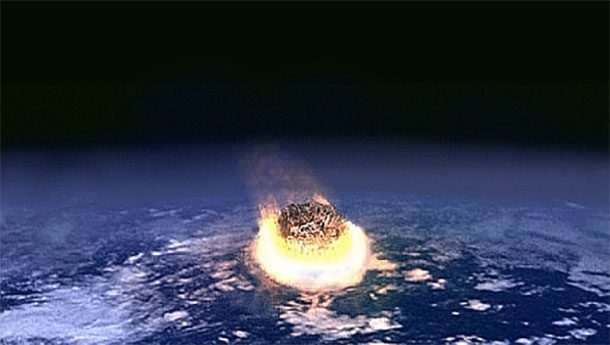 Source: bbc
Source: bbc On June 30, 1908, a massive explosion occurred in eastern Siberia. Nearly 2,000 square kilometers (770 square miles) of forest were completely flattened. The explosion was roughly 1,000 times more powerful than the nuclear bomb dropped on Hiroshima. But the craziest part? No impact crater was ever found. The explosion has been attributed to the air burst of a meteoroid that disintegrated about 10 km above the surface of the Earth.
The rocket hot tub
 Source: nationalgeographic.com
Source: nationalgeographic.com In 2000 some people walking along a beach in Corpus Christi, Texas found a large, mysterious metal object that had washed ashore. They wanted to turn it into a hot tub, but when officials determined it to be the end of an Ariane 5 rocket, NASA objected to the beachcombers’ plans!
A rocky cure
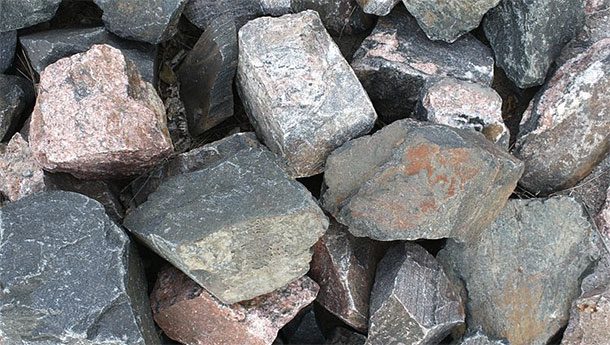 Source: livescience.com
Source: livescience.com On August 14, 1992, people in the town of Mbale in Nigeria heard a large explosion in the sky. Shortly thereafter, rocks began falling from the sky. Since the region was struggling with an epidemic of AIDS, residents thought the stones were a cure from God. They even ground up the rocks and ate them.
Hoba meteorite
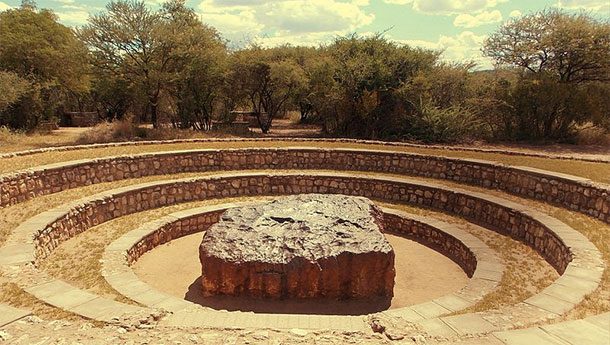 Source: sciencechannel.com
Source: sciencechannel.com Weighing 60 tons, the Hoba meteorite is the largest known meteorite to ever be found. Although it slammed into present-day Namibia about 80,000 years ago, it wasn’t found until recently. In 1920, a farmer who was plowing his field came across its metallic tip. Today, it has been turned into a national monument.
Space Balls
 Source: bbc.com
Source: bbc.com Three large metal spheres crashed into northern Vietnam in 2015. Officials have determined the balls to be compressed air tanks from a rocket. They seem to be Russian made, but it is not clear whether they were sold to another country. Scientists are not sure how the objects ended up in Vietnam. They may have fallen from a satellite that was burning up in the Earth’s atmosphere, but since they exhibit very little damage, officials suspect they could be the result of a failed rocket launch.
Brushing shoulders with space objects
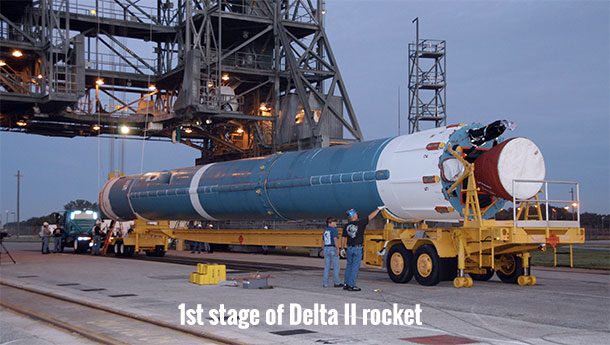 Source: nationalgeographic.com
Source: nationalgeographic.com In January 1997, a woman was taking a walk in Oklahoma when she saw a streak of light across the sky and then felt something brush against her shoulder. It turns out that she narrowly missed being smashed by space debris! It was part of a U.S. Delta II rocket that was launched the year before.
The Kaidun meteorite
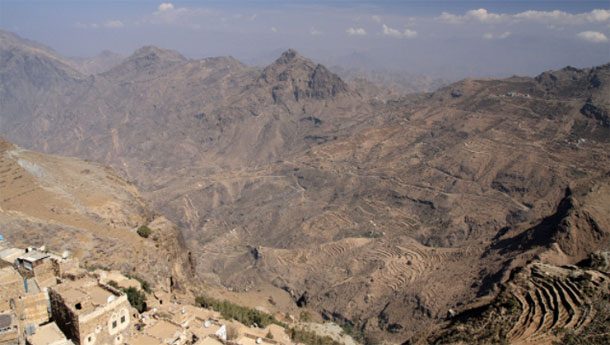 Source: lpi.usra.edu
Source: lpi.usra.edu On December 30, 1980, a meteorite smashed into the Earth near a Soviet military base in Yemen. Known as the Kaidun meteorite, it contained a uniquely wide variety of minerals. In fact, several of them haven’t even been found in nature (florenskyite). Scientists are still unsure as to the meteorite’s origin.
Sylacauga
 Source: sciencechannel.com
Source: sciencechannel.com In 1954, 31 years old Ann Hodges was sleeping on her couch when a grapefruit sized meteorite came smashing through her roof and struck her on the hip. For this reason, Sylacauga is often known as Hodges Meteorite.
The Burmese cylinder
 Source: bbc
Source: bbc In 2016, an extremely large metal cylinder crashed into a jade mine in northern Burma (Myanmar). Meanwhile, another chunk of metal with Chinese writing slammed through the roof of a house nearby. Officials believe that it was part of a Chinese rocket launch. The stages are supposed to fall into uninhabited regions or bodies of water but in this case, it nearly missed a town.
A mysterious sphere
 Source: spacesafetymagazine.com
Source: spacesafetymagazine.com In 2016, a mysterious sphere crashed into Riacho dos Poços, Brazil. It narrowly missed the home of Valdir José Mendes, severed a cashew tree, and dug itself into the ground. It has since been determined to be a Composite Overwrapped Pressure Vessel. These gas tanks are carried by the space shuttle and used for a wide variety of space missions. Apparently they’re also built to last!
Tagish Lake
 Source: psrd.hawaii.edu
Source: psrd.hawaii.edu In January 2000, a large fireball smashed into the Tagish Lake area of British Columbia. Local inhabitants recorded a strong smell of sulfur in the air following the impact. The rock has been especially interesting to scientists because although they haven’t been able to pinpoint its origin, the composition of the rock resembles something quite strange…the Sun (except for the gaseous compounds).
Radioactive fallout from space
 Source: nationalgeographic.com
Source: nationalgeographic.com In January 1978, radioactive material rained down over northern Canada. It turned out to be from the faulty power generator of a Soviet satellite named Kosmos 954. Despite a frantic campaign to clean up the mess (Operation Morning Light), only .1 % of the material was ever recovered.
The sign from above
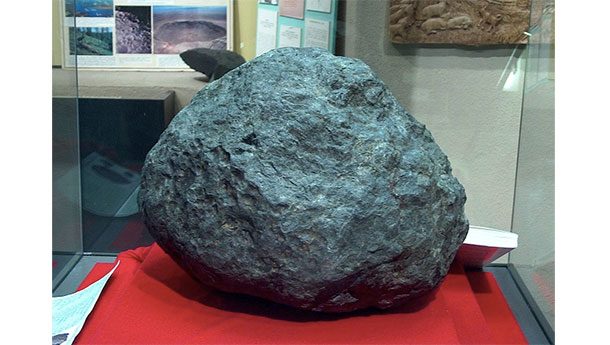 Source: livescience.com
Source: livescience.com In 1492, a large rock crashed into the Earth near the French town of Ensisheim. The impact was seen as a sign from heaven because it wouldn’t be for another 300 years until people discovered what meteorites were. The rock was brought into the city and tied down in a church to keep it “Earth-bound.” To this day, it is the oldest preserved meteorite in Europe.
Sikhote-Alin
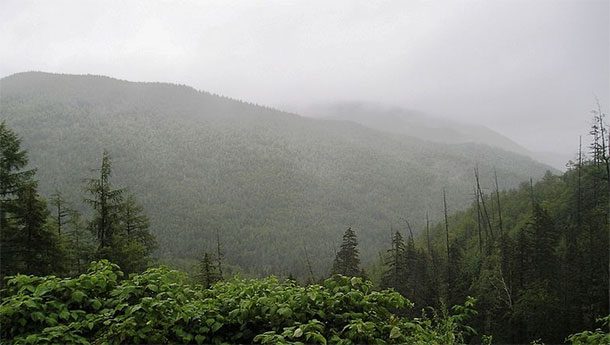 Source: sciencechannel.com
Source: sciencechannel.com In 1947, the largest ever observed meteorite collision happened in the Sikhote-Alin Mountains of southeastern Russia. Witnesses even said that the meteorite was brighter than the sun. Scientists still visit the region today to find and study fragments.
A pea sized meteorite
 Source: telegraph.co.uk
Source: telegraph.co.uk In 2009, 14 year old Gerrit Blank was on his way home from school in Germany when he saw a flash of light. Almost immediately a pea sized rock grazed his hand before smashing into the ground and creating a foot wide crater. Fortunately for Gerrit, he escaped with little more than a scar on his hand.
Allende
 Source: naturalhistory.si.edu
Source: naturalhistory.si.edu In 1969, the Allende meteorite crashed into Mexico and led to one of the largest meteorite manhunts in history. The pieces were found to contain elements that are older than our solar system! And that’s not all, it had microscopic diamonds! That’s right, diamonds from space.
Murchison meteorite
 Source: scientificamerican.com
Source: scientificamerican.com In September of 1969, an enormous fireball broke up in the Australian sky. The craziest thing about this space rock? It contained numerous organic compounds. The pieces are still being studied by scientists today because they may provide clues to life in our universe.
The first asteroid to ever be tracked all the way to the Earth's surface
 Source: livescience.com
Source: livescience.com October 6, 2008 was the first time in history that scientists had tracked an asteroid before it hit Earth. As predicted, it smashed into the Nubian Desert of northern Sudan. 35 pounds of meteorites were later found strewn across the desert floor. The asteroid was renamed Almahata Sitta, which means “Station Six” in Arabic. This was the name of a railroad station near the impact crater.
Orgueil
 Source: lpi.usra.edu
Source: lpi.usra.edu In May 1864, a meteorite smashed into the Earth near Orgueil, France. The pieces of rock were so soft that they could be cut with a knife. Soon, however, the meteorite was causing controversy after organic material was found in the remnants. Eventually though, it was all proven to be a fraud! Somebody had glued pollen seeds into the space rock with coal dust.
ALH 84001
 Source: space.com
Source: space.com In spite of its boring sounding name, ALH 84001 attracted quite a bit of attention when scientists declared that it may contain evidence of life on Mars. This was later disproved, but ALH 84001’s journey was still quite impressive. Billions of years ago, it was formed in a Martian volcano. About 15 million years ago a meteorite strike launched it into space, and it hurled towards Earth. 13,000 years ago, it slammed into the ice of Antarctica and stayed there until it was discovered in 1984. That’s a pretty interesting life for such a boring name!
Tomanowos
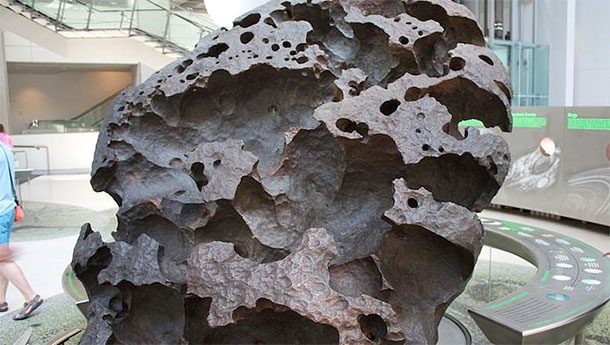 Source: sciencechannel.com
Source: sciencechannel.com More technically known as the Willamette Meteorite, this large rock is believed to be the remains of the iron core of a planet that crashed into another planet billions of years ago. Although it was “discovered” by westerners in 1902, Native Americans (Clackamas tribe) knew about it for many years. To them, it was a healing source called Tomanowos. These days, the rock is on display at the American Museum of Natural History in New York City and members of the tribe still visit it.
The largest man made object to ever re-enter the atmosphere
 Source: nationalgeographic.com
Source: nationalgeographic.com On February 7, 1991, the city of Oro Verde in Argentina witnessed something out of the ordinary…glowing trails in the sky. The trails were caused by metal fragments falling to Earth. Fortunately, they didn’t hurt anybody. The fragments turned out to be part of the Soviet made Salyut-7 space station. To this day, it is one of the largest human made objects to re-enter Earth’s atmosphere.
An unlucky Chevy but a very lucky owner
 Source: livescience.com
Source: livescience.com On October 9, 1992, people attending Friday night football games all across the northeastern US witnessed an extremely bright streak across the sky. The streak ended its descent by smashing into a Chevy Malibu parked in Peekskill, New York. Michelle Knapp, the owner of the car, had bought it for $400. She resold it for $10,000.
If you enjoyed this post, be sure to check out 25 Strangest Things Found In Outer Space.
Lists Going Viral Right Now
Featured Image: https://pixabay.com (public domain), 25. https://commons.wikimedia.org (public domain; text added), 24. https://commons.wikimedia.org (public domain), 23. https://commons.wikimedia.org (public domain), 22. Sykes Cottages via flickr, CC BY 2.0, 21. https://commons.wikimedia.org (public domain), 20. Eugen Zibiso via flickr, CC BY 2.0, 19. https://pixabay.com (public domain), 18. https://commons.wikimedia.org (public domain; text added), 17. Yeowatzup via flickr, CC BY 2.0, 16. https://pixabay.com (public domain), 15. CortoMaltese_1999 via flickr, CC BY 2.0, 14. https://commons.wikimedia.org (public domain), 13. Richard Martin via flickr, CC BY 2.0, 12. https://pixabay.com (public domain), 11. Konrad Andrä, Ensisheim meteorit donnerstein 1 vss2007, CC BY-SA 2.0 DE, 10. Ромашов Герман Викторович, Горы 099, CC BY-SA 4.0, 9. https://pixabay.com (public domain), 8. https://pixabay.com (public domain), 7. https://commons.wikimedia.org (public domain), 6. https://pixabay.com (public domain), 5. https://pixabay.com (public domain), 4. https://pixabay.com (public domain), 3. Mike Cassano via flickr, CC BY 2.0, 2. https://commons.wikimedia.org (public domain; text added), 1. https://pixabay.com (public domain)



























